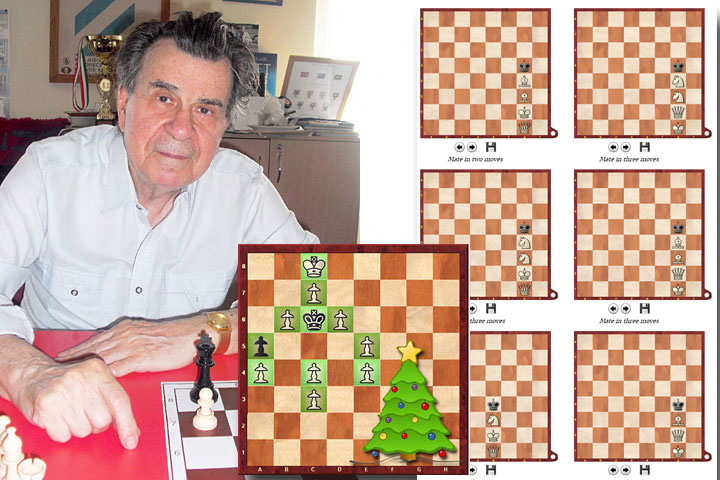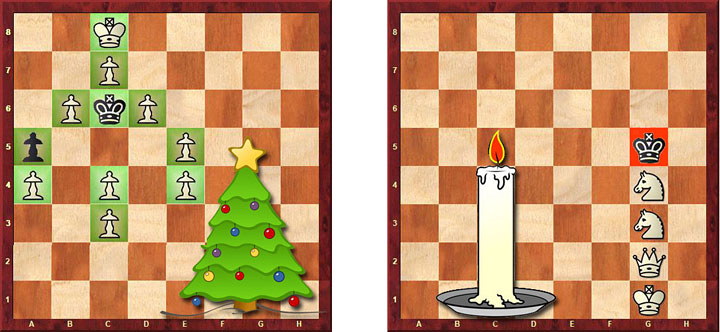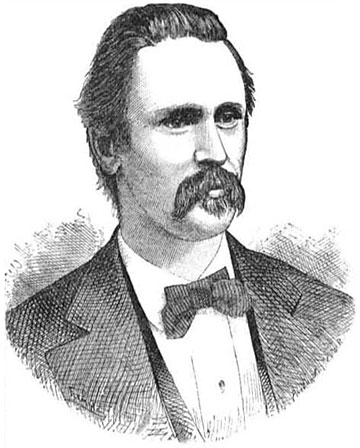


These are the first two Christmas problems in the series — both are mate in three moves.

Here now the solutions to check out on our ChessBase live game viewer:

Click or tab a position from the list to switch
To compensate for our late delivery of the Benko solutions here are a couple of extraordinary problems for you to solve. The solutions are at the bottom of the page. First of all here's a problem I have known for decades and which always fascinated me.
A mate in eight moves may look quite daunting, but all you have to do is find the first three preposterous moves. After that you can execute a well-known mate that is here shown in its full glory. Try to solve this problem yourself by moving pieces on our live diagram board above, and don't look at the solution until you have put some effort into it. Please.
This problem is really fascinating: look at the position and ask yourself which is the worst possible move, the least meaningful and most detrimental? Surely to move the white king onto the f-file and subject it to immediate checks by the black promotion ...f1Q. Well, believe it or not, that's the only way to force a mate in three moves.
Kraemer, whose full first name was Adolph — he shortened it for obvious reasons — was a master of the unexpected and atrocious. Try and figure the following out:
How can White mate in five moves? By sacrificing all his pieces, every last one of them, and allowing the final capture by Black to be executed with check! Hard to believe? Take a look at the solution at the bottom of the page.
Here's another favourite of mine:
A number of GMs I showed the position to, many years ago, were either stumped or took a lot of time to solve it. For our readers a hint: think crazy, try the most ridiculous move.
We published this position four years ago, but it bears repeating.
Before you check the solution we invite you, dear reader, to decide: which white chess man is absolutely certain not to mate the black king on h1 in five moves. You can move pieces on our live diagram above. The solution is given below.
In his book Sam Loyd and his Chess Problems (get a copy, there are some still available) Alain C. White writes:
Loyd made. the problem in 1858 at the Morphy Chess Rooms. "It was quite an impromptu to catch old Dennis Julien, the problemist, with. He used to wager that he could analyse any position, so as to tell which piece the principal mate was accomplished with. So I offered to make a problem, which he was to analyse and tell which piece did not give the mate. He at once selected the Queen's Knight's Pawn as the most improbable piece, but the solution will show you which of us paid for the dinner " (Loyd, 1st April, 1909).
"The theme of starting a White Pawn on its own square, and making it give mate by promotion, was not absolutely new with Loyd... But his problem remains to this day the most surprising rendering of the theme, because Black is required to make such unexpected moves to defeat the series of threats and so bring about the mainplay. The march of the Pawn is more like the play in a Help-Mate problem, where both sides co-operate to bring about the mate " (B.C.M., Vol. XXIX., p. 321).
 The theme of the problem is the Excelsior, which comes from a poem written in 1841 by Henry Wadsworth Longfellow. There are many examples of problems in which a pawn moves from its original square all the way to promotion to deliver mate. But none is as clever as Loyd's.
The theme of the problem is the Excelsior, which comes from a poem written in 1841 by Henry Wadsworth Longfellow. There are many examples of problems in which a pawn moves from its original square all the way to promotion to deliver mate. But none is as clever as Loyd's.
Samuel Loyd (1841–1911) was not just the greatest American problem composer. He was probably the greatest problem composer the world has ever seen. Loyd published over 700 chess problems, many with humorous or unexpected solutions, the likes of which had never been seen before. Probably his most famous, "was composed in a spirit of fun and is a joke from beginning to end."
